Function call dissection
Assumed Knowledge:
Learning Outcomes:
- Better understand the concept of parameter passing.
- Familiarize yourself with standard terminology - formal paramters vs. actual parameters.
- Understand the control flow and memory transactions during a function call.
- Understand the concept of Call Stack.
Author: Gaurav Gupta
Formal parameters vs. actual parameters
- Formal parameter is the name used for the variable in the function definition.
- Actual parameter is the value copied into the formal parameter during a function call.
Consider the following example:
1
2
3
4
5
6
7
8
9
int square(int n) { //n is the "formal parameter"
int result = n * n;
return result;
}
void setup() {
int a = 5;
int b = square(a); //whatever is inside the brackets is the "actual parameter"
}
In the above example,
- Formal parameter in function
squareisn. - Actual parameter in the function call
square(a)isa(5). - If the function call was
square(d/20 + e/9), the actual parameter would bed/20 + e/9(100/20 + 36/9 = 9).
What happens during a function call?
Before we can truly conquer recursion, it’s critical to understand what happens when a function is called. Consider the following example:
1
2
3
4
5
6
7
8
9
10
11
12
13
14
15
16
17
18
19
void setup() {
int ax = 1, ay = 3;
int bx = 6, by = 5;
float d = distance(ax, ay, bx, by);
println("Distance: "+d);
}
float distance(int x1, int y1, int x2, int y2) {
int s1 = square(x2-x1);
int s2 = square(y2-y1);
int sumSquares = s1 + s2;
float result = sqrt(sumSquares);
return result;
}
int square(int num) {
int answer = num * num;
return answer;
}
STEP 1: setup function is invoked by JVM
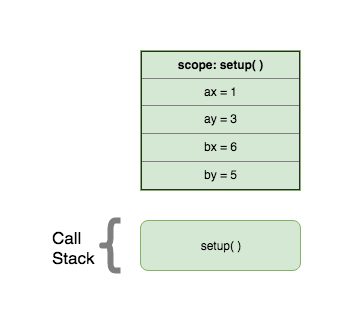
function call is placed on the stack. Note that parameter is null because we typically do not pass any arguments to setup, at least in this unit.
STEP 2: setup function calls distance with parameters 1, 3, 6 and 5.
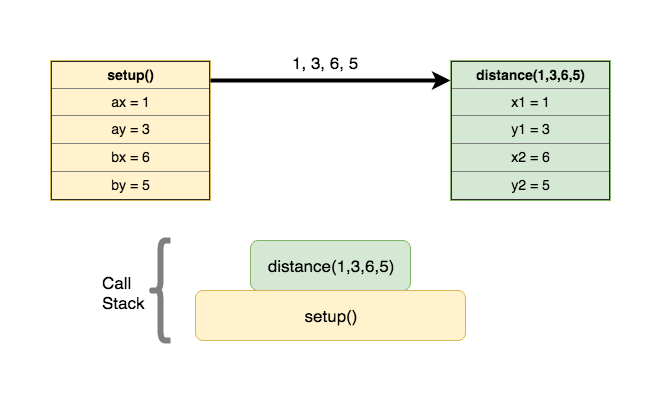
Another entry is made for the call to distance and placed on the call stack.
STEP 3: distance calls square with parameter 5
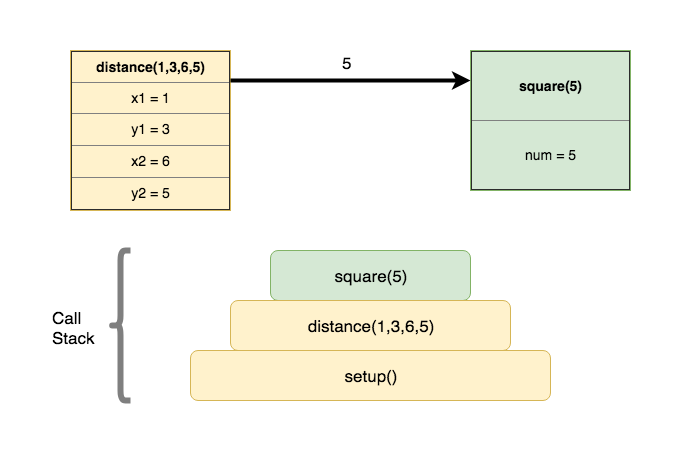
A third entry is made for the call to square and placed on the stack.
STEP 4: square returns 25 to distance
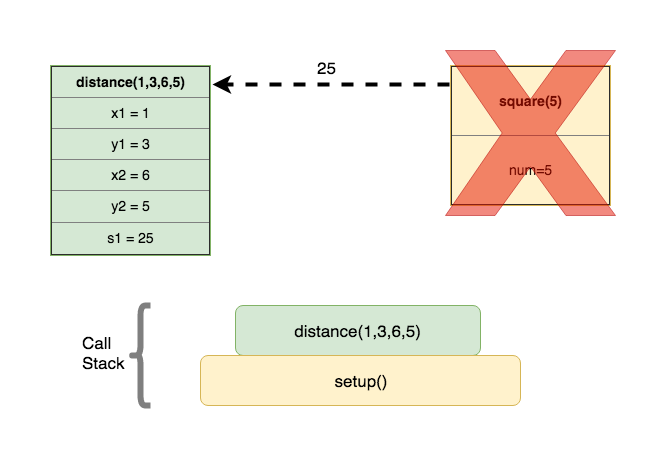
Entry for square is taken off the stack. distance becomes the active function.
STEP 5: distance calls square with parameter 2
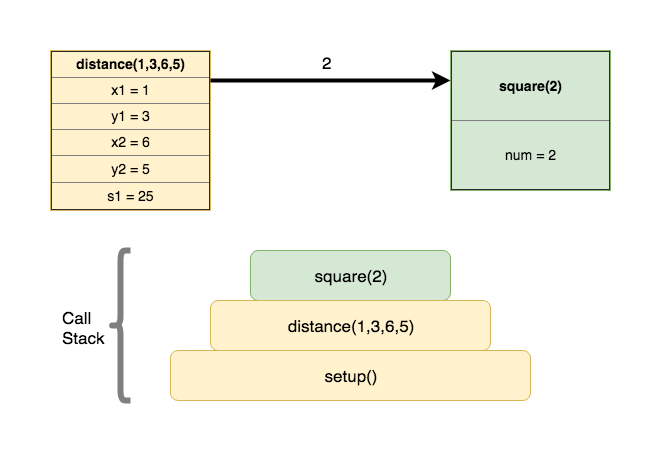
A third entry is made for the call to square and placed on the stack.
STEP 6: square returns 4 to distance
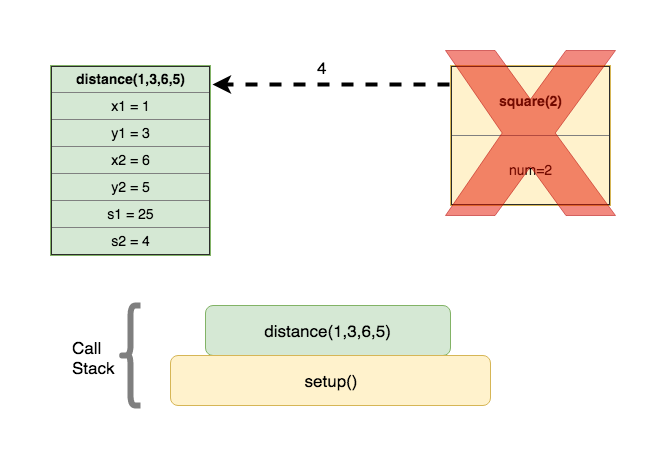
Entry for square is taken off the stack. distance becomes the active function.
STEP 7: distance calls sqrt with parameter 29
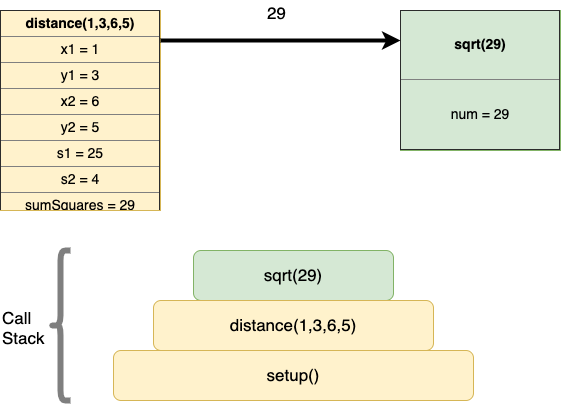
A third entry is made for the call to sqrt and placed on the stack.
STEP 8: sqrt returns 5.38516 to distance
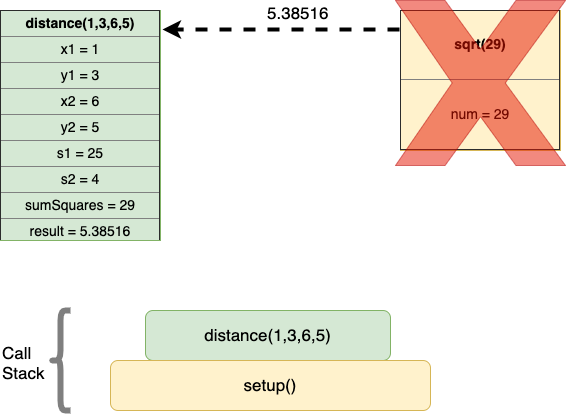
Entry for square is taken off the stack. distance becomes the active function.
STEP 9: distance returns 5.38516 to setup
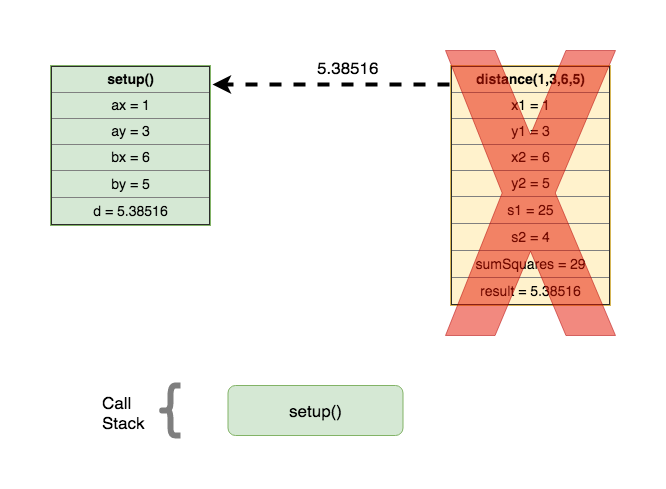
Entry for distance is taken off the stack. setup becomes the active function.
STEP 10: setup terminates
Entry for setup is taken off the stack. Call stack is now empty. Program has now finished execution.
Summary of control flow
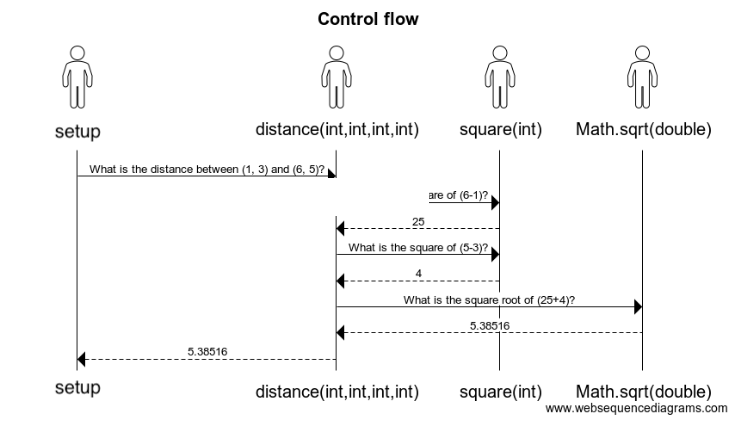
Another example
void setup() {
size(600, 400);
background(255);
print(foo(1729));
}
int foo(int n) {
return bar(n%10)/2;
}
int bar(int n) {
return n+1;
}
The function foo is called with actual parameter 1729.
This is copied into the formal parameter n for function call foo(1729). This function in turns call the function bar with the actual parameter 9, that is copied into the actual parameter n for function call bar(9). bar(9) returns 10 to foo(1729). foo(1729) divides it by 2, and returns 5 to setup.
Notice that n for foo(1729) and n for bar(9) are local variables for the respective function calls. Draw the call stack and it will really help you out!
One last example
Consider the following code:
int x = 0;
void init() {
x = width;
}
void update() {
x--;
}
void draw() {
background(255);
line(x, 0, x, height);
update();
}
void setup() {
size(600, 400);
background(255);
init();
}
The sequence of functions called is:
setupsizebackgroundinitdrawbackgroundlineupdatedrawbackgroundlineupdatedrawbackgroundlineupdate- (and the four -
draw,background,line,updaterepeat)